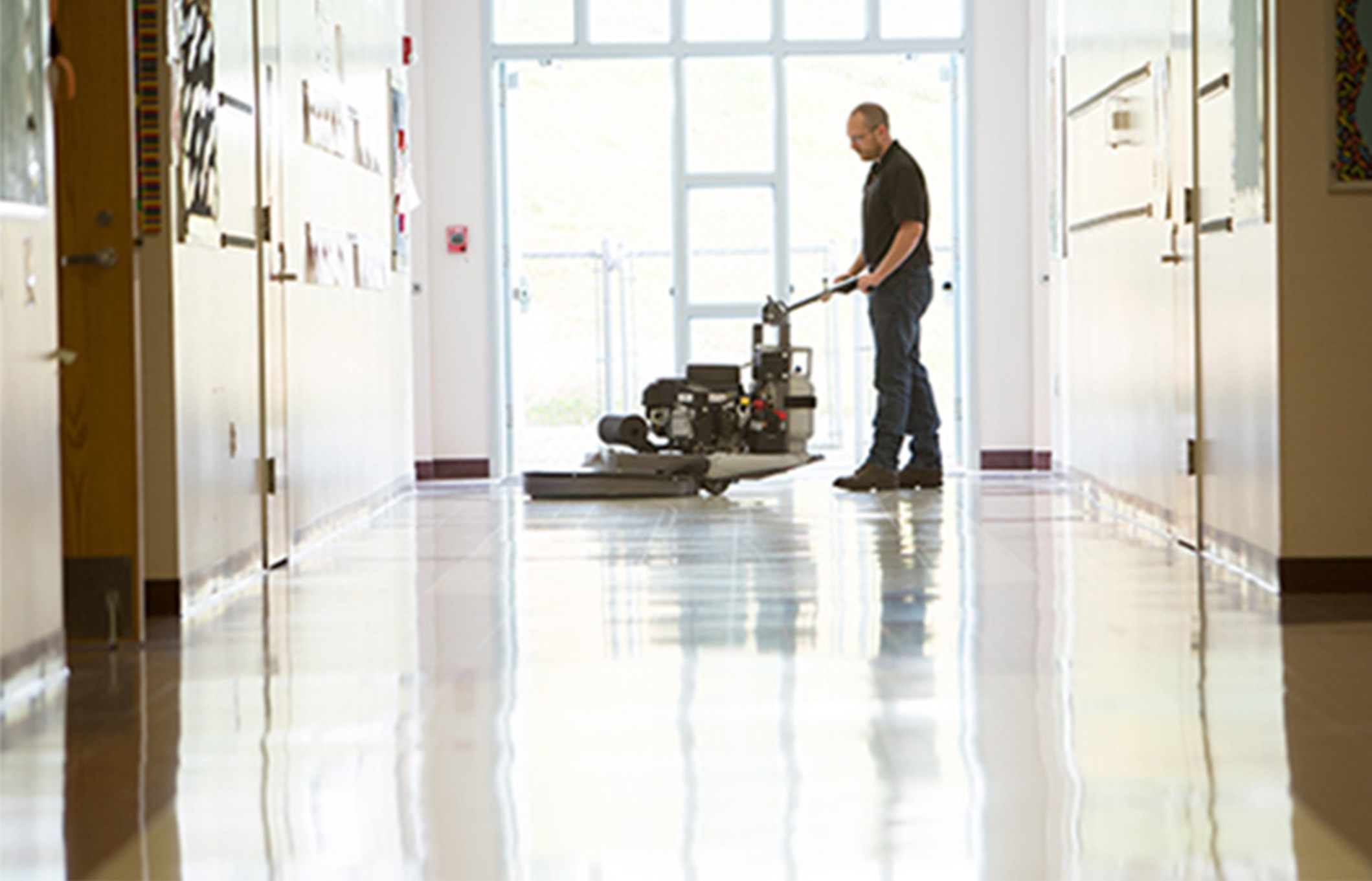
Ensure The Success of Your Floor Strip and Reseal Project with Proquip’s 5 Important Tips!
Floor strip and reseals are a task that requires precision, the right products, and a bit of know-how. In this blog, we’ll delve into five important tips to ensure your strip and reseal project is a resounding success.
1. Allow Polish to Cure Naturally: Avoid Blow Dryers and Fans
One of the most common mistakes in floor maintenance is attempting to expedite the curing process of polish. You may be tempted to use blowers or fans to accelerate drying, however, this is a practice that should be firmly avoided. Here’s why:
- The Science Behind It: Floor polish is designed to cure at a specific rate to create a hard, durable finish. When you rush this process by using fans or blowers, the top of the polish will cure faster than what’s beneath, compromising the polish’s integrity. Rapid curing can lead to uneven surfaces, streaking, and reduced durability.
- The Solution: Instead, allow the polish to cure naturally and slowly. This ensures a uniform finish and maximizes the polish’s longevity. Where possible, choose a time of year that’s warmer and drier for best results.
2. Never Add Water to Polish to Make It Go Further
In an attempt to save money or extend the life of their polish, you may be tempted to dilute the product with water. This is a common error and it can have detrimental effects on your floors. Here’s why:
- Dilution Weakens the Solution: Adding water dilutes the polish, reducing its effectiveness and coverage. You may think you’re making the product go further, but you’re actually compromising the finish.
- The Solution: Always use polish as directed and avoid dilution. Pioneer Eclipse offers high-quality, cost-effective polishes for all types of flooring and applications, so there’s no need to cut corners.
3. Apply More Thin Coats of Polish, Not Fewer Thick Coats
When applying polish, the goal is to achieve a robust, even finish. Some may be tempted to apply a single, thick coat, believing it will save time and effort. However, this approach can lead to suboptimal results. Here’s why:
- Uneven Application: Thick coats are more likely to result in uneven finishes, with visible brush or roller marks. The uneven distribution can affect the polish’s durability and appearance.
- The Solution: Opt for multiple thin coats, allowing each layer to dry properly before applying the next. This method yields a smooth, consistent finish, enhancing both aesthetics and durability.
4. ALWAYS Neutralise After Stripping
Stripping is a crucial step in the process of rejuvenating your floors. After stripping, it is imperative to neutralise the surface. Why is this so important?
- Residual Alkalinity: Strippers are typically alkaline in nature. Failing to neutralise the surface leaves residual alkalinity that can interfere with the adhesion and performance of your new polish.
- The Solution: Use a neutralising agent to restore the floor’s pH balance. This crucial step ensures a clean slate for your polish application and prevents ‘walking off’ – where your polish hasn’t adhered and so is quite literally ‘walked off’ by foot traffic shortly after application.
5. Invest in Floorcare Systems Formulated to Be Used Together
The danger of mixing products from different brands is that the products may contain ingredients that react negatively with each other and therefore compromise the entire project. It’s important to invest in a comprehensive floorcare system designed to be used together. Here’s why this approach is beneficial:
- Synergy of Products: When you choose products designed to work together, you ensure compatibility and optimal results. The Pioneer Eclipse range includes all the products required for high-level stripping, cutting back, polishing/sealing as well as everyday cleaning and maintenance to ensure a cohesive and hassle-free floorcare system.
- Streamlined Maintenance: Using a complete system simplifies your floorcare routine. You won’t have to worry about product compatibility issues or troubleshooting unexpected complications.
